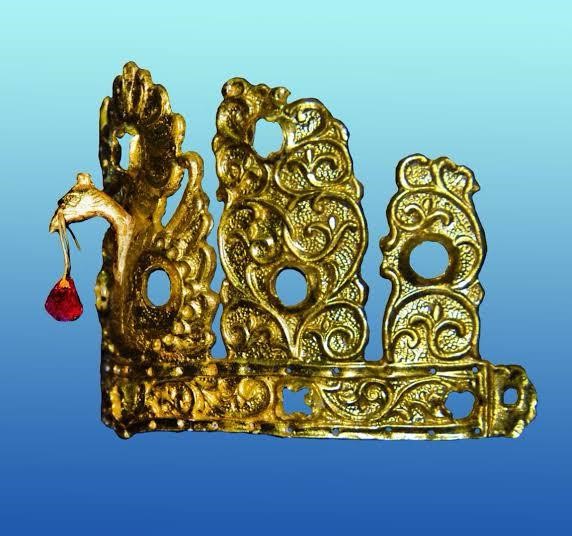Das Geheimnis des Lebensbaums in der Çifte Minareli Medrese
Prof. Dr. Hakan Hadi Kadıoğlu, der weiterhin an den historischen und kulturellen Beiträgen von Erzurum arbeitet und in vielen Bereichen zusammenfassende und lehrreiche Artikel verfasst, hat die ‘Türkische Kosmische Vorstellung’ am ‘Kronentor’ der Çifte Minareli Medrese untersucht…

Prof. Dr. Hakan Hadi Kadıoğlu, who continues his studies contributing to the history and culture of Erzurum and writes compiling and instructional articles on various subjects, researched the ‘Turkish Universe Perception Embroidery’ on the ‘Crown Door’ of the Çifte Minareli Medrese.
Prof. Dr. Hakan Kadıoğlu reminded that on the portal of the Çifte Minareli Medrese, under an arch within a frame, the double-headed black bird standing on the tree of life, as if supporting it on its shoulders, is depicted. He stated, ‘The tree of life rises from the ground, passing through a moon-shaped rosette to ascend to the sky. Two dragons with wolf heads and scaly bodies wrap around the tree of life. The branches of the tree of life are depicted in the form of palm trees, with pomegranate-shaped fruits and small bird figures among the branches. It is also thought that the double-headed black bird or eagle represents the Umay-Huma bird. The branches of the tree of life correspond to the layers of the sky. Among its branches, there are the offspring of Huma and sacred fruits. The black bird defines large and predatory birds in Turkish culture.’
‘It has always been there since prehistory’
Kadıoğlu, emphasizing that the Tree of Life is a topic that is thoroughly researched and found in different forms in Eastern and Western civilizations, continued his words as follows, ‘Eliade writes the following about the Tree of Life; ‘The most common mythological world center we encounter from prehistory is the cosmic mountain and the world tree. These images are encountered both among the Altay people and throughout Asia. The Altay Tatars believe that Bay Ülgen sits on the Golden Mountain (Al-tau ~ Altay) in the middle of the sky. The Abakan Tatars call this ‘Iron Mountain.’ According to the ancient Turks who believed that the tree called Demir Kazık extends from the ground to the Pole Star, there are seven layers of heaven, paradise is placed here, and the highest of the heavens is the ninth heaven.’
‘The Huma Bird seems to be identified with Erzurum’
Prof. Dr. Hakan Kadıoğlu, stating that the Tree of Life connecting the sky and the earth serves as an intermediary during shamanic rituals for the shaman to ascend to the sky and planets, mentioned that it is believed that the birds among the branches of the Tree of Life are unborn shaman spirits. He stated, ‘According to this last idea, the double-headed eagle at the top of the tree probably symbolizes Ayıg Toyon. Another thought is that these birds facilitate the passage of souls to the other world after death. In shaman rituals, it is necessary for the shaman to pass through the door where the black bird is located by using the branches of the tree of life. The movements of the shaman in these rituals are seen today in the eagle game called ‘Harahusta’ in Siirt, ‘Karakustana’ in Urfa and Adıyaman, and ‘Yarkusta’ in Hınıs. The lion and leopard figures seen in the same nature motif at the bottom row of the portal of the Yakutiye Medrese are guardians protecting the shaman rising to the sky or ordinary people from evil spirits. Umay is the owner goddess of the tree of life. She is the protector of birth and unborn children. In the belief of Gök Tengri, she is the most important entity after God. In ancient Turkic inscriptions, only her name is occasionally mentioned next to God. The Hakas people call her Imay Ece, and the Siberian Yakuts call her Ayısıt, sometimes also referred to as Humay, and they are integrated with the Huma bird. The song of the Huma bird is now almost synonymous with Erzurum.’
‘The motif needs to be explained in depth’
Kadıoğlu, stating that the rosettes called ‘şemse’ found not on the portal of the Çifte Minareli Medrese but on the door of the Yakutiye Medrese represent the moon, sun, and other planets, said, ‘These figures are related to sun and moon worship. Today, the moon and star are included in our flag and in the universes. The dragon figure in the motif on the portal of the Çifte Minareli Medrese has a cosmogonic significance. It envelops the universe. It is also called serpent, nek serpent, büke, or universe. In Turkish mythology, there are earth and sky universes. The earth universe is without scales, flat, and tube-like in form, while the sky universe is depicted with scales and wings. It also carries the meanings of health, long life, and sovereignty. It is observed that the universes have changed shape over time and acquired the form of a wolf’s head. This shift in form is seen as a shift in meaning. It is used in the cosmic symbol sense of reaching the sky dome and God. This last form is encountered in Gok Turk, Uygur, and Seljuk period works. We therefore wish for this work, which constitutes the material existence of Turkish thought that has reached today, to be published in a way that reflects the meanings touched above. Perhaps the way to explain this motif in depth could have been possible with a high-quality painting.’







